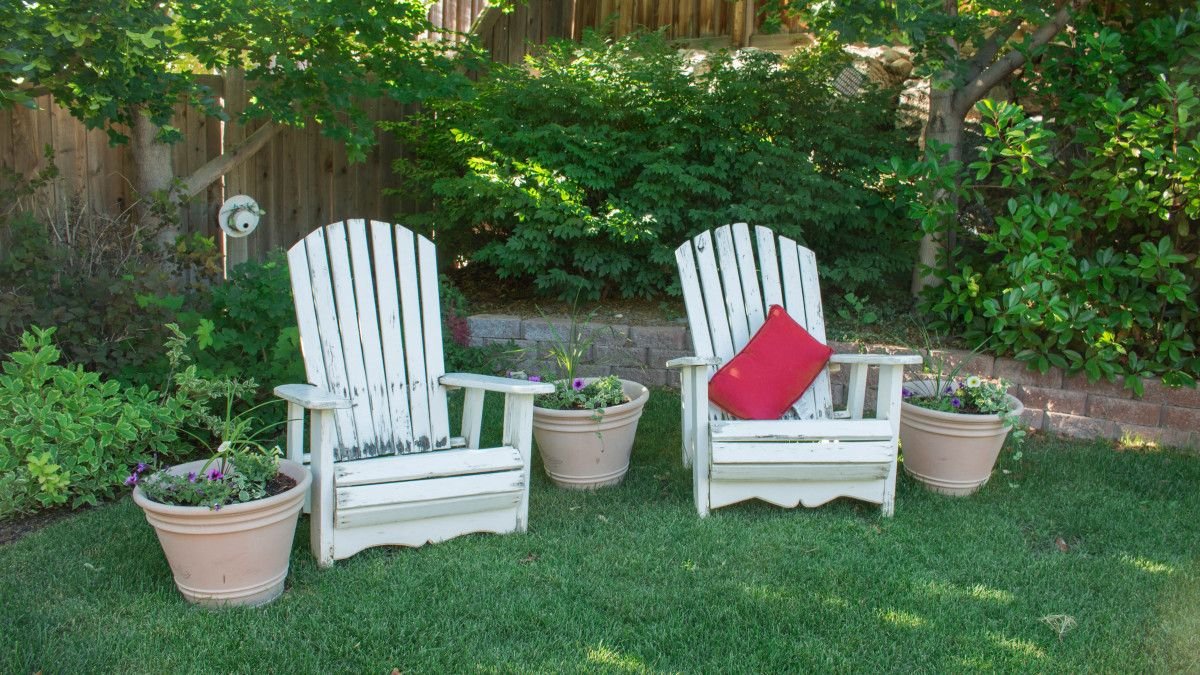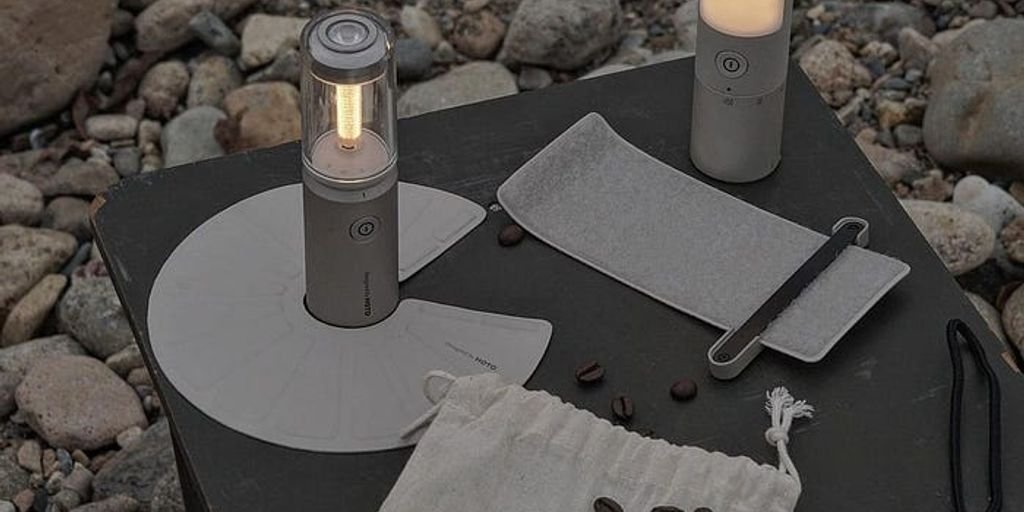Outdoor living spaces have become an essential aspect of modern homes, offering a blend of comfort, style, and a connection with nature. As trends evolve, homeowners are seeking innovative ways to transform their backyards into multifunctional, sustainable, and aesthetically pleasing extensions of their indoor living areas. This article explores the latest trending ideas for outdoor living spaces that cater to a variety of activities while ensuring seamless transitions and year-round enjoyment.
Key Takeaways
- Outdoor living spaces are increasingly designed to be multifunctional, serving as extensions of the indoors and catering to various activities.
- Sustainability and nature-infused design are at the forefront of outdoor living trends, reflecting a growing ecological consciousness.
- Hardscaping is a dominant trend, with bold landscaping and smart solutions for maximizing small spaces and creating cohesive outdoor environments.
- The fusion of functionality and aesthetics is key, with a focus on selecting plants and materials that offer year-round appeal and spatial arrangements that enhance the outdoor experience.
- Comfort, sociability, and the incorporation of focal points are essential in designing welcoming and entertaining outdoor living spaces.
Embracing the Outdoor Living Trend

Understanding the Shift Towards Nature-Infused Design
The allure of the outdoors has never been stronger, with 2024’s outdoor living trends reflecting a global spirit and a desire for boundless design. Homeowners are increasingly seeking to create spaces that are not just visually appealing but also deeply connected to the natural environment. This shift towards nature-infused design is about more than aesthetics; it’s about fostering a sense of peace and tranquility by blending outdoor and indoor living.
- Embracing native flora and fauna
- Creating multifunctional spaces
- Prioritizing ecological sustainability
These elements are at the heart of the movement, with each contributing to a harmonious outdoor setting that resonates with the ecological consciousness characteristic of modern design philosophies. The integration of nature into our living spaces is a response to the growing need for a sustainable and comfortable outdoor experience.
In essence, the transition from indoor comfort to outdoor serenity is becoming seamless, with strategic placement and innovative materials ensuring that our outdoor spaces are as inviting as our interiors.
The focus on biodiversity and ecological sustainability is shaping not just the design but also the very essence of our gardens. Native plant species are celebrated for their resilience and contribution to local ecosystems, attracting pollinators and beneficial insects, and promoting biodiversity. This approach to outdoor design is not just a trend; it’s a commitment to the environment and to our well-being.
Creating Multifunctional Outdoor Zones
The essence of a multifunctional outdoor space lies in its ability to adapt to various activities and needs. By strategically designing your outdoor area, you can create a dynamic environment that serves as an extension of your indoor living space. Consider the following elements to enhance the versatility of your backyard:
- Establish Traffic Patterns to guide movement and define areas.
- Add a Fire Source such as a fire pit or fireplace for warmth and ambiance.
- Include a Variety of Seating Options to accommodate different group sizes and activities.
- Create an Outdoor Space Focal Point to anchor the design and draw attention.
- Boost Visual Appeal with decorative elements that complement your home’s style.
To truly embrace this lifestyle shift, think about how you can make your outdoor spaces feel larger than they actually are. This could involve dividing your area into different zones based on activities such as dining or lounging.
In addition to these practical aspects, visual continuity is key. Placing matching rugs both inside and outside, along with coordinated lighting fixtures, can enhance the ambiance and blur the boundaries between indoor and outdoor living. Ambient lighting, particularly with outdoor LED lanterns, sets the mood for evening enjoyment, potentially extending the time spent outdoors.
Incorporating Sustainable Practices in Outdoor Spaces
Creating an eco-friendly outdoor living space starts with mindful planning. Opt for durable and sustainable materials like recycled plastic, bamboo, or FSC-certified wood to minimize environmental impact. These choices not only ensure longevity but also promote responsible sourcing and waste reduction.
Sustainable considerations for your outdoor space include:
- Xeriscaping principles to conserve water resources
- Permeable paving to reduce stormwater runoff
- Efficient irrigation systems to minimize water usage
Embracing sustainable practices in outdoor design not only benefits the environment but also enhances the quality and enjoyment of your outdoor living space.
By integrating these sustainable practices, homeowners can create outdoor spaces that are both beautiful and environmentally conscious. The trend towards eco-friendly solutions is a testament to the growing awareness of our ecological footprint and a commitment to preserving our natural surroundings.
Go Big with Hardscaping

Exploring Bold Landscaping and Garden Trends
As we look towards 2024, the landscape of outdoor living is evolving with a focus on bold, nature-infused designs that promote sustainability and biodiversity. The trend is not just about aesthetics; it’s about creating spaces that resonate with the environment and encourage ecological balance.
- Native plant species are becoming the heroes of the garden, valued for their low maintenance and ecological benefits.
- Hardscaping is being reimagined to blend with the natural surroundings, providing structure without dominating the landscape.
The fusion of functionality and aesthetics is at the heart of these trends, ensuring that each outdoor space is as practical as it is beautiful.
The drive to blur the boundaries between indoor and outdoor living continues to inspire homeowners to create more inviting and cohesive spaces. With garden rugs, outdoor furniture, and accessories, the transition becomes seamless, offering a tranquil backyard oasis that is both comfortable and exciting.
Integrating Hardscape Elements for a Cohesive Look
Integrating hardscape elements into your backyard design is about more than just aesthetics; it’s about creating a seamless flow between your indoor and outdoor spaces. Using similar materials for both areas can significantly enhance this connection, making the transition almost imperceptible and extending living spaces beyond the confines of your home.
- Natural stone patios and pathways provide a timeless and versatile foundation for outdoor activities.
- Water features, such as waterfalls and ponds, introduce a dynamic and soothing element to the garden.
- Coordinated accessories like matching rugs and lighting fixtures can unify the indoor and outdoor ambiance, especially during the evening.
By carefully selecting and placing these elements, you can achieve a harmonious balance that respects the natural landscape while providing functional and inviting outdoor living areas.
Remember, the goal is to create a cohesive environment where hardscape features complement rather than dominate the natural surroundings. This approach not only enhances the beauty of your outdoor space but also contributes to a more sustainable and integrated home environment.
Maximizing Small Spaces with Smart Hardscaping Solutions
In the realm of outdoor design, small spaces should not limit creativity. Thoughtful hardscaping can transform a modest area into a functional and stylish retreat. For instance, built-in benches with storage not only provide seating but also cleverly conceal garden tools and outdoor cushions, maintaining a tidy appearance.
- Create Small Backyard Zones: Divide your space into distinct areas for dining, lounging, or gardening to give the illusion of a larger yard.
- Add Color Effectively: Use vibrant hardscape materials or furnishings to inject personality and depth.
- Use the Power of Verticals: Incorporate trellises or tall planters to draw the eye upward and maximize vertical space.
Embracing multifunctional elements and vertical designs can make a small outdoor space feel larger and more inviting.
Mirrors are another ingenious addition, reflecting light and scenery to make a petite patio feel more expansive. By selecting furniture and decor that complement the scale of the area, you can avoid a cluttered look and instead create an oasis that feels both cozy and open.
Fusion-Forward: Functionality and Aesthetics

Blending Style and Practicality in Outdoor Designs
The modern approach to outdoor living spaces is to create a cohesive environment that serves both aesthetic and practical purposes. By selecting weather-resistant furniture and incorporating seasonal design ideas, homeowners can enjoy their outdoor spaces throughout the year while maintaining an inviting and organic feel.
- Consider the functional needs of your space
- Use similar materials indoors and outdoors for continuity
- Select durable and visually appealing additions
The trend leans towards creating multifunctional outdoor living zones that cater to diverse activities, ensuring that every design element serves a purpose without compromising on style.
Architects and designers are increasingly focused on bringing indoor comfort to the outdoors. This involves using innovative products and materials that make outdoor spaces as comfortable and stylish as the interior. Whether your style is bold or nuanced, the key is to design spaces that are both exciting and sustainable.
Selecting Plants and Materials for Year-Round Appeal
Creating an outdoor living space that maintains its allure throughout the seasons involves a strategic selection of plants and materials. Incorporate plants with various colors and heights to fill gaps and ensure your garden has visual interest year-round. Evergreens and ornamental grasses, for example, provide vibrant color even during the winter months, when most plants are dormant.
When planning your landscape, consider the changing conditions each season brings. Spring’s arrival brings flowering plants that add bursts of color and attract beneficial wildlife, contributing to the biodiversity of your garden. In contrast, the use of raw materials like stone pathways or wooden decks can offer both durability and visual charm, regardless of the climate.
To achieve a seamless indoor-outdoor connection, consider architectural features such as large glass windows or French doors. This not only enhances the continuity of your living spaces but also allows for the use of similar materials inside and out, further integrating your home with nature.
Spatial Arrangements for Enhanced Outdoor Living
The art of spatial arrangement in outdoor living spaces is pivotal in creating an inviting and functional backyard. Efficient use of space ensures that every square foot is utilized, offering a seamless transition from indoor comfort to outdoor charm. By dividing the area into distinct zones for dining, lounging, or recreation, homeowners can craft a versatile environment that adapts to various activities and social gatherings.
Thoughtful spatial planning not only maximizes the usability of your outdoor area but also enhances the visual appeal, making the space feel larger and more cohesive.
Here are some strategies to consider:
- Use outdoor rugs to define and separate zones, creating clear boundaries without erecting physical barriers.
- Integrate ambient lighting, such as outdoor LED lanterns, to extend the usability of the space into the evening hours.
- Plan for all-season enjoyment by incorporating elements like fireplaces or covered patios, ensuring comfort throughout the year.
Remember, the goal is to create an outdoor living space that resonates with your lifestyle, allowing you to enjoy the beauty of nature from the comfort of your home.
Create a Welcoming and Entertaining Outdoor Living Space

Designing for Comfort and Sociability
The essence of a welcoming outdoor living space lies in its ability to mimic the comfort of indoor living. Manufacturers are now offering innovative products that make it easier to create an outdoor area that’s as stylish and cozy as your home’s interior.
When selecting furniture, prioritize comfort and livability. Imagine sinking into a plush sofa under the stars, or gathering around a firepit on Adirondack chairs adorned with soft pillows. Here are some ideas to enhance comfort and sociability in your outdoor space:
- Opt for comfortable, livable furniture that invites relaxation.
- Create intimate seating areas for different group sizes, from a cozy nook for two to a communal space for larger gatherings.
- Incorporate elements like water features or fragrant plants to engage the senses and promote tranquility.
Carefully designed seating areas not only provide comfort but also foster social interactions, making your backyard a hub for family and friends.
Remember, the goal is to design a space that feels as inviting as your living room, where every element contributes to a sense of warmth and community.
Innovative Ideas for Outdoor Dining and Relaxation
Transforming your backyard into a hub for dining and relaxation requires a blend of creativity and functionality. Outdoor kitchens and dining areas have become the heart of the backyard, offering a place to cook, eat, and socialize. Consider installing a built-in barbecue or pizza oven for a touch of gourmet flair. Add an outdoor refrigerator and storage to keep essentials at hand, reducing trips inside.
To enhance the ambiance, integrate lighting solutions such as string lights or solar-powered lanterns, which provide both illumination and a warm, inviting glow.
For relaxation, hammocks, swing chairs, and daybeds are trending, inviting you to unwind in the tranquility of your own space. Here’s a list of elements to consider for your outdoor dining and relaxation area:
- Comfortable seating with weather-resistant cushions
- A sturdy dining table, possibly with a fire pit center
- Protection from the elements, like umbrellas or a pergola
- Heating options for cooler evenings, such as patio heaters or a fire pit
- Ambient and task lighting for evening use
- Outdoor rugs and throw pillows for added comfort and style
Remember, the key to a successful outdoor living space is to create an area that feels like a natural extension of your home, where functionality meets relaxation.
Incorporating Focal Points to Elevate Your Backyard
Focal points in a backyard are essential for creating a captivating outdoor living space. They draw the eye and encourage movement through the area, making the space more inviting. Choose a focal point that resonates with your personal style and the intended function of your outdoor space. Whether it’s a firepit, water feature, or a striking piece of garden art, ensure it reflects the overall theme of your backyard.
When planning your outdoor space, consider how each element contributes to the ambiance. A well-chosen focal point not only enhances the aesthetic appeal but also serves as a gathering spot for friends and family.
Here are some ideas to consider for creating focal points:
- An outdoor rug to define a seating area
- A freestanding firepit for warmth and ambiance
- A water feature to add tranquility and attract wildlife
- Strategic lighting to highlight key features
- A pergola or gazebo for architectural interest
Remember, the goal is to create a space that feels like an extension of your home, where comfort meets style. By carefully selecting and positioning your focal points, you can transform your backyard into a sanctuary for relaxation and entertainment.
Conclusion
As we’ve explored the myriad of trending ideas for outdoor living spaces, it’s clear that the possibilities are as vast as one’s imagination. From the integration of hardscaping elements to the fusion of functionality and aesthetics, each concept offers a unique opportunity to enhance the comfort and appeal of your backyard. Whether you’re looking to create a seamless transition from indoors to outdoors, establish a cozy fire pit gathering area, or incorporate sustainable design principles, the trends of 2024 cater to a diverse range of styles and preferences. Remember, transforming your backyard into a tranquil oasis is not just about following trends—it’s about tailoring these ideas to suit your lifestyle and making your outdoor space a true extension of your home. With thoughtful planning and a touch of creativity, your backyard can become the perfect backdrop for relaxation, entertainment, and cherished memories with family and friends.
Frequently Asked Questions
What are some trending ideas for outdoor living spaces in 2024?
The 2024 trends for outdoor living spaces include nature-infused design, creating multifunctional zones for various activities, and incorporating sustainable practices. Bold landscaping, smart hardscaping solutions, and areas designed for comfort and sociability, like fire pits and outdoor kitchens, are also popular.
How can I create a seamless transition between indoor and outdoor living areas?
To create a seamless transition, ensure that the decor and design elements flow naturally between the indoor and outdoor spaces. Use similar materials, color schemes, and styles to connect the two areas, and consider features like large sliding doors to physically open up the space.
What are some multifunctional outdoor zone ideas?
Multifunctional outdoor zones can be designed for dining, relaxation, entertainment, or recreation. Consider adding a dining set, comfortable seating with weatherproof cushions, a fire pit for gatherings, and recreational areas for games or a small garden for both aesthetics and culinary use.
How can I maximize a small outdoor living space?
Maximizing a small outdoor space involves smart hardscaping solutions like vertical gardens, foldable furniture, and built-in seating. Opt for multipurpose elements and declutter the space to make it feel larger. Utilize lighting and mirrors to create the illusion of a more expansive area.
What are some sustainable practices for outdoor spaces?
Sustainable practices include using eco-friendly materials, implementing rainwater harvesting systems, choosing native plants that require less water, and using solar-powered lighting. Composting and creating a habitat for local wildlife can also contribute to a sustainable outdoor living space.
How can I add year-round appeal to my outdoor living space?
To ensure year-round appeal, select plants that offer seasonal interest, use durable materials that can withstand various weather conditions, and incorporate elements like a fire pit or heated lamps for cooler months. Awnings or pergolas can provide shade during summer and shelter in the rain.


